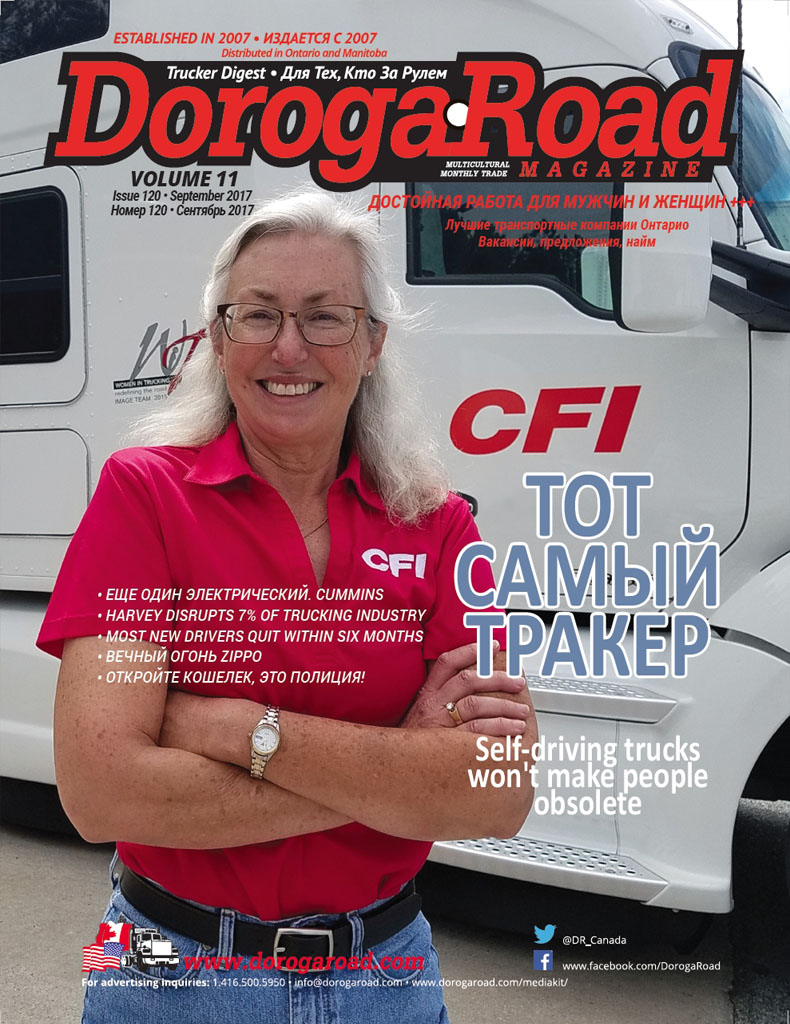Technology won′t make human drivers obsolete. Actually, driverless trucks can improve working conditions for people
Think of Amazon Prime, those meal kits from Blue Apron and all the other services that bring purchases right to your door. Pretty much everything you own: your phones, kitchen appliances and clothes are all delivered directly to you, or the store you shop in, by a truck. People drive those trucks, and sometimes, they feel a connection to what they are hauling in the back.
Not long after the World Trade Center towers went down on 9/11, short haul truck driver Bob Dolan was carrying empty body bags headed to New York City.
"We were picking thousands of them up a day. You have this empty feeling ... we were still part of that whole process of the cleanup, the closure."
In 2013, more than $11 trillion worth of cargo crossed the country by truck, and that's estimated to almost double by 2040.
In part, all the new ways we shop have drastically changed the trucking industry.
The hours can be long, plus there are safety issues. Modern trucks have collision avoidance, extra mirrors, but it takes a lot of skill to handle a big rig. And, at first, Shaneara Scott-Butler was hesitant.
When she started driving cars at the age of 16, she would panic whenever she saw a big truck. But seven years ago, she turned to trucking because her job at a nursing home wasn't paying enough.
"I was finding myself working every day, all day, I was working two jobs Monday through Friday, and then a part time job on Saturdays and Sundays ... I had to make a career change."
She started noticing lots of tempting job listings for truck drivers. But her husband wondered if driving a truck was a good idea, if she was so afraid of them.
Her answer: "The only way to get over that fear was to learn how to drive a truck, so the fear turned into a bet, and a bet turned into what is now my career today and I enjoy every bit of it ... I don't even think he paid up, whatever we bet it on."
She got a commercial driver's license, and went on to drive passenger buses as well as 18-wheelers.
A mid-range salary for a long haul truck driver is around $41,000 a year, which is a lot more than what you typically earn as a nursing assistant.
The money is good, but long-distance driving makes it hard to make time for regular exercise and it's not easy to get fresh fruit or salad at a truck stop. And many long-distance drivers don't get to see their families very often.
An 18-wheeler is Scott-Butler's favorite vehicle to drive, but she gave that up because she wanted to be home for her daughters everyday.
Stefan Seltz-Axmacher leads Starsky Robotics in San Francisco. The company is working to develop self driving trucks in part to alleviate some of those issues for drivers. He met one driver who only saw his daughter once a month from the time she was three years old until she was 15.
Seltz-Axmacher thinks he can give truck operators more time at home with family by getting drivers out of trucks while keeping them in the virtual driver's seat, kind of like military drone pilots.
"And the way that we get there is we're making trucks drive themselves on the highway, but then be remote control or tele-operated for the first and last mile," Seltz-Axmacher said.
That way, the drivers can be a lot more productive, like when agriculture went from farming by hand to using machines, Seltz-Axmacher says.
"200, 300 years ago, it was very hard to farm more than like a hundred, a thousand acres, just because there's only so much farming one person can do, and we ... just invented a tractor, and now a single person can farm ten thousand acres," he says.
The self-driving truck operates on the interstates, where there are long straight roads and few pedestrians or bicycles that could get hit. Humans take over at the end of the trip near cities, where navigation is harder.
In 2015, there were almost 3,600 fatal commercial truck crashes in the United States. More than 4,000 people died in truck crashes that year.
Most crashes are caused by driver error.
Seltz-Axmacher says there are already trucks with his technology regularly hauling freight on the highways. But self-driving trucks and cars are only allowed in a handful of states, like Nevada and Michigan.
Stefan is pretty adamant his technology won't make human drivers obsolete. Actually, he says his driverless trucks can improve working conditions for people.
"We can make it so that these drivers can have normal hours and a normal life and still pay them well and treat them well and treat them with respect," he says.
But long time truck driver Finn Murphy is a skeptic. He's been a truck driver for more than 30 years, and he wrote the book, "The Long Haul."
"Maybe your guy ... who's developing this doesn't want the driver gone, but the company he's going to be selling his machine to is certainly going to want the driver gone," Murphy says.
"Truck drivers need to be paid, they need vacations, they need time off, you need a whole compliance department, you need to follow the regulatory procedures ... the whole point of automating the supply chain is to automate the supply chain."
Murphy says he might get into trouble from other drivers for saying this, but he actually thinks self driving trucks could have an upside.
Driverless trucks don't guarantee perfect safety, but he says if they can reduce the people who die in truck crashes to the hundreds, then "our children's children are going to look at us and say, 'You guys drove your own cars? You guys used pedals to go faster and pedals to stop, you had a wheel? You people were savages.'"
Murphy is still concerned about the truck drivers potentially getting left behind. It's people who drive those trucks that bring you that new phone, those shoes you bought online and the hipster T-shirt you're wearing.








 Newspaper about
Newspaper about